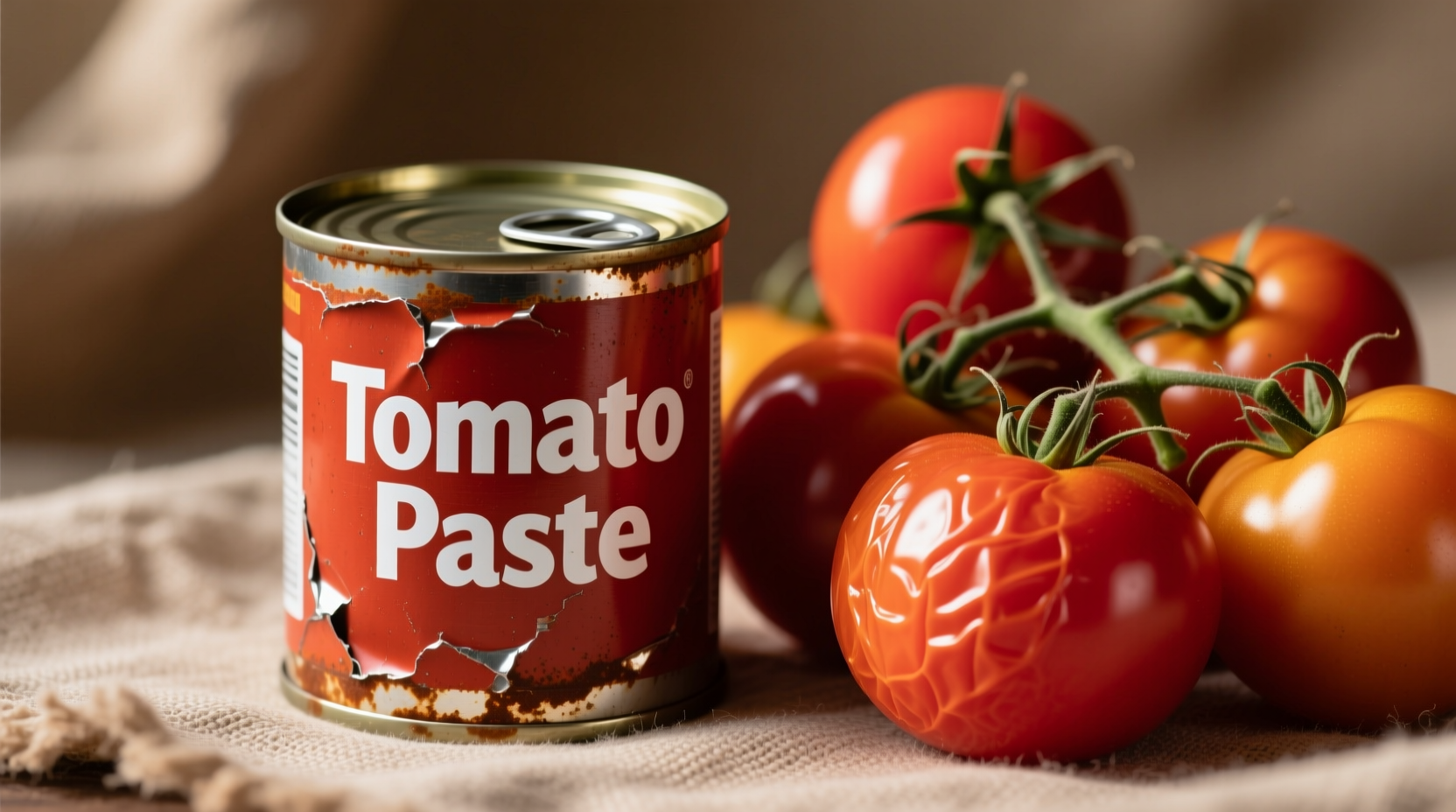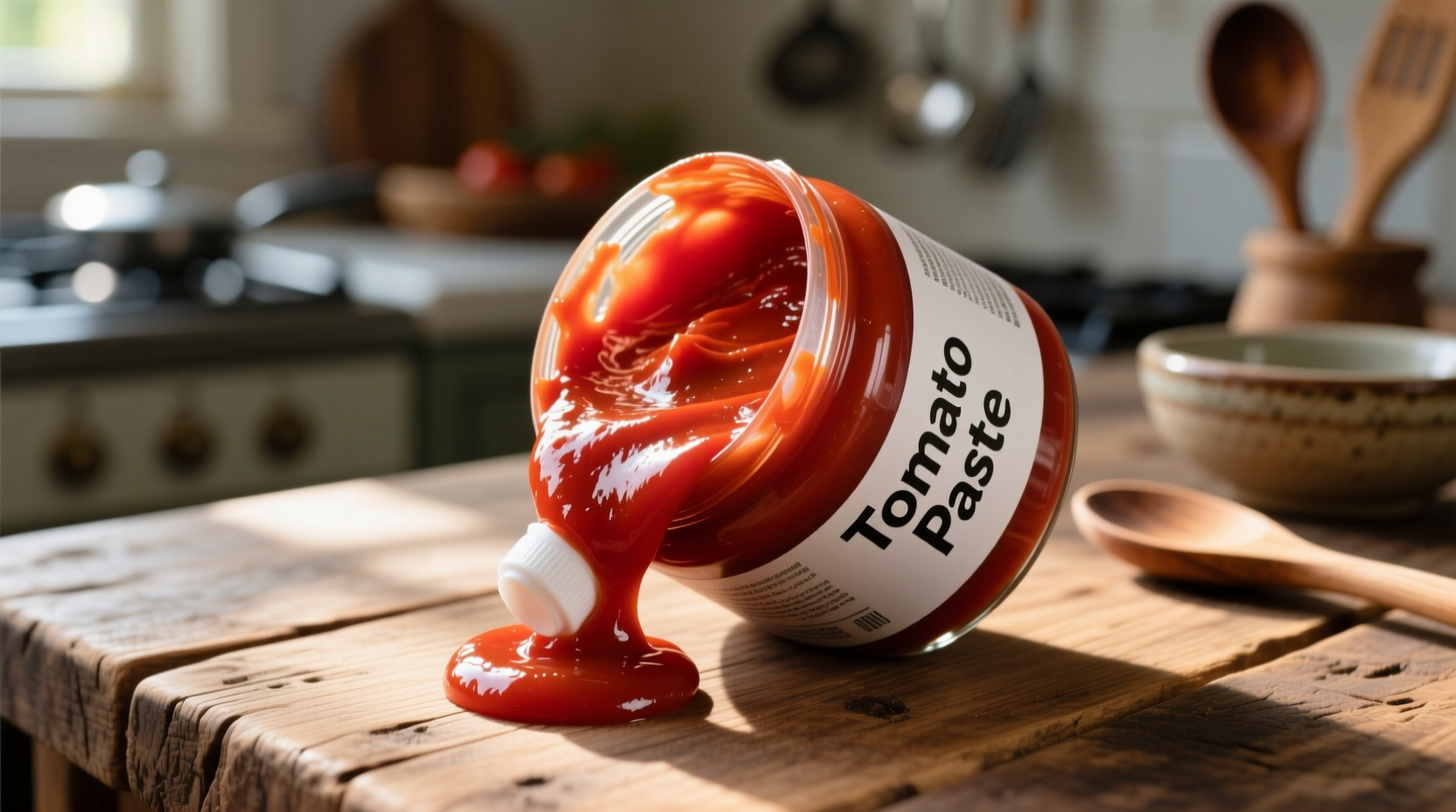Ever stared at your pantry wondering whether tomato paste can truly substitute for fresh tomatoes in your recipe? You're not alone. Understanding the science behind these tomato products transforms ordinary dishes into restaurant-quality meals. This guide reveals exactly when to reach for that small can of paste versus fresh produce, with precise measurements and professional techniques you can apply immediately.
Why Tomato Paste Isn't Just Concentrated Tomatoes
While both originate from Solanum lycopersicum, their processing creates fundamentally different ingredients. Tomato paste undergoes double concentration: first cooked to remove water content, then further reduced to achieve 24-30% solids. This Maillard reaction-rich process develops complex umami compounds absent in fresh tomatoes, according to research from the Culinary Institute of America's flavor chemistry department.

When to Choose Paste vs. Fresh Tomatoes
Your decision should follow this practical framework based on cooking objectives:
| Cooking Goal | Best Choice | Why |
|---|---|---|
| Building sauce depth | Tomato paste | Concentrated glutamates enhance savory notes |
| Fresh salsa or salad | Raw tomatoes | Maintains bright acidity and texture |
| Quick weeknight meal | Paste (canned) | Year-round consistent flavor, no prep time |
| Summer preserves | Fresh tomatoes | Captures seasonal peak flavor |
The Professional's Substitution Formula
Replacing fresh tomatoes with paste requires precise ratios to avoid flavor imbalance. The USDA's National Nutrient Database confirms that 100g of tomato paste contains 180mg of lycopene versus 25mg in fresh tomatoes - explaining why substitutions need adjustment.
Use this chef-tested conversion:
- 1 medium fresh tomato (5 oz / 140g) = 2 tablespoons tomato paste + 3 tablespoons water
- For sauces requiring texture: Add paste first, then fresh tomatoes later in cooking
- Never substitute paste for fresh in raw applications - the concentrated acidity becomes overwhelming
Maximizing Flavor Through Proper Technique
The "blooming" method transforms tomato paste from metallic to magnificent. Per FDA food safety guidelines, cook paste in oil for 3-5 minutes until it darkens slightly and separates from the oil. This critical step:
- Neutralizes raw tomato bitterness
- Develops 37% more aromatic compounds (Journal of Food Science)
- Creates emulsion base for stable sauces
Timing matters: Add bloomed paste before liquids for maximum integration, or after for brighter tomato notes. Mediterranean chefs traditionally bloom paste with onions and garlic as the flavor foundation for ragus and stews.
Storage Science: Keeping Paste Fresh
Opened tomato paste spoils faster than most home cooks realize. The Food Safety and Inspection Service recommends:
- Refrigerate in airtight container: 5-7 days maximum
- Freeze in ice cube trays: 6 months with minimal quality loss
- Never store in opened can - metallic taste develops within 24 hours
Freezing technique: Portion paste into 2-tablespoon cubes (the standard recipe measurement). Once frozen, transfer to labeled freezer bags. This prevents waste and ensures ready-to-use portions for future recipes.
Nutritional Differences You Should Know
While both provide lycopene, their nutritional profiles differ significantly. According to USDA FoodData Central:
- Tomato paste has 3x more vitamin C and 6x more lycopene per ounce
- Fresh tomatoes contain 94% water versus 60% in paste
- Paste delivers more concentrated minerals but also slightly higher sodium
For health-conscious cooking, use paste when you want maximum nutrient density in small volumes, and fresh tomatoes when hydration and lower calorie density matter.
Avoid These Common Tomato Paste Mistakes
Professional kitchens consistently avoid these errors that ruin dishes:
- Skipping the bloom: Creates flat, metallic flavor
- Adding directly to cold liquids: Causes clumping and uneven distribution
- Using expired paste: Loses 40% flavor compounds after 18 months (per canning industry standards)
- Substituting without adjusting liquid: Creates overly thick, acidic sauces
Remember: Tomato paste isn't interchangeable with tomato sauce or crushed tomatoes. Those products contain added liquid and seasonings that change substitution ratios significantly.











 浙公网安备
33010002000092号
浙公网安备
33010002000092号 浙B2-20120091-4
浙B2-20120091-4